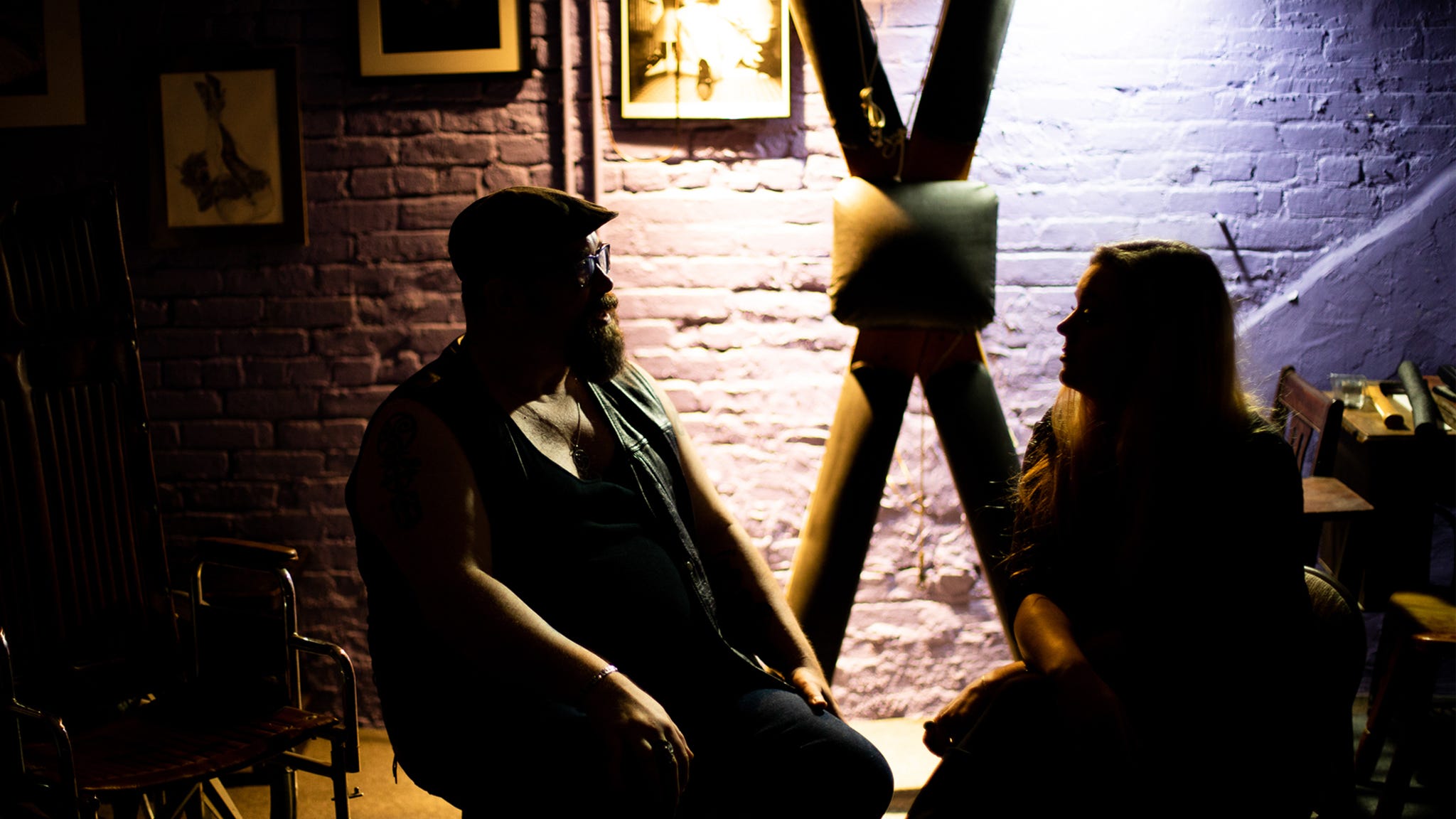This 12-Step Group Meets in the Basement of a Fetish Shop
There are some things you just can't talk about at church-based recovery meetings. So these kinksters created a community all their own.

Photos by Katia Repina | Edited by Brendan Spiegel
Every Wednesday evening in Manhattan, a small group of addicts gathers in the basement below a shop where the front window display features a male mannequin decked out in a blonde wig, pink corset and matching tutu. Posted on the door is a sign warning that you must be 21 years or older to enter. A second mannequin in the entryway wears a black latex harness and holds a riding crop. Down a staircase tucked behind the colorful array of condoms and lube, past the collection of leather collars and shoeboxes filled with thigh-highs and stilettos, is a set of sliding French doors. Don’t let the St. Andrew’s Cross bondage mount or vintage photo of men in assless chaps fool you: This is a recovery meeting. Only it’s held not in a church basement, but the basement of a fetish shop. Around 6:30 p.m., the meeting chair sits down at the head of the table, opens a white binder and clears his throat. “Welcome to Recovery in the Lifestyle,” he annou…
Keep reading with a 7-day free trial
Subscribe to Narratively to keep reading this post and get 7 days of free access to the full post archives.



